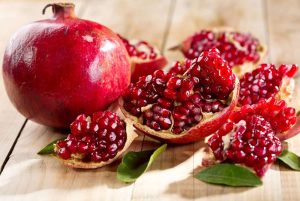Weight loss is not just weight loss, different people are suitable for different weight loss methods, need to combine personal circumstances. Do you have this feeling: dieting to lose weight works especially fast, but once you let go of eating, you will quickly bounce back, this is why? Today we are going to talk about the importance of adequate nutrition for weight loss results.
Calculate the diet calories alone
It is difficult to lose weight
In the process of weight loss, most people focus on controlling calories above, often ignoring the most important nutrient intake.
In the initial weight loss phase, it does start with reducing calories. Simply counting calories will indeed have a fat loss effect in the short term, but healthy and effective fat loss is more focused on long-term results, and it is difficult to really lose weight with pure calorie control and easy to rebound.
Because you may lose protein, muscle, and weight loss really need to lose fat, so although you lose weight, but in fact the pressure is not thin. So even if you count calories accurately, it doesn’t mean you’ll necessarily lose weight.
If you eat a balanced diet and let your body take in enough nutrients, your body will become energetic and less fatigued, and the more energy you consume. Through this virtuous cycle, the body will naturally lose weight slowly and become healthier and less likely to rebound.
What is a high nutrient density diet?
When it comes to getting enough nutrients, it is important to mention a high nutrient density diet. Nutrient density (ND) refers to the concentration of important nutrients (vitamins, minerals and proteins) contained in food on a per-calorie basis, and is generally used to evaluate a particular nutrient in food alone. The ND of a nutrient is the ratio of the ratio of the recommended dietary allowance (RDA) of that nutrient to the ratio of the energy of that food to the energy RDA, and can be expressed by the formula: ND = % of a food that meets the RDA of a nutrient / % of the energy RDA met by that food. To use an analogy: the same 100 kcal, fruit has more portions and also contains a lot of water, vitamins and some dietary fiber; while chocolate contains a lot of sugar and trans fat, so fruit has a higher nutrient density.
There are a pair of twin brothers, their height, weight, basal metabolism, exercise consumption are the same, with weight loss calories 1400 kcal to lose weight. After one month, the brother lost 6 pounds and the brother only lost 2 pounds. Obviously the recipes are the same calories, why the weight loss effect difference is so big?
The twin brothers in the month they lost weight in the food arrangement, we can see that the brother lost 6 pounds, he ate grains, vegetables, fruits, nuts and muscle tissue need protein sources lean meat, eggs. In the same calorie situation, the brother chose noodles, cakes, white rice, ham, cookies, this type of food. This is why there is such a big difference in weight loss results.
High quality low-carb, low-fat diet
Can reduce the risk of death
In a paper on a study of the correlation between low-fat and low-carb meals on mortality in Americans, it was concluded that low-carb and low-fat meals were not associated with the risk of death when looking solely at the ratio of carbohydrate, fat, and protein. When considering the quality of the food source (nutrient density), both low-carb and low-fat meals were associated with mortality risk, with both diets of high quality reducing mortality risk.
Therefore, the final conclusion is clear: only the quality of the diet is associated with the risk of death, and it is not meaningful to talk about “low-carb” or “low-fat” without the nutrient density of the food. Therefore, the key is to improve the quality of your diet!
Here is a list of the different foods –
High-quality carbohydrates: non-starchy vegetables (beans, carrots, roots, etc.), whole grains (whole wheat, oats, quinoa, brown rice), fruits.
Low-quality carbohydrates: refined grains (bread, white rice, steamed buns), free sugars (including fruit juices, honey, various natural syrups), potatoes, pure starches, processed vermicelli (vermicelli, rice noodles, sweet potato flour, etc.)
High-quality fats: vegetable fats and unsaturated fats.
Low quality fats: saturated fats, trans fats.


